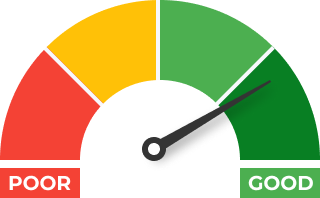Running a bar and restaurant has always been a tough business, and 2020 has not made it any easier. Covid-19 lockdowns continue to directly impact the hospitality business and around 10% of restaurants have permanently closed their doors. Luckily, the tides are changing. With vaccines on the horizon and cautious optimism in the markets, we are daring to look positively towards 2021.
We want to help you boost your sales in this difficult climate. Let’s take a look at how your establishment can transition to take out and delivery to keep afloat.
Why you should transition to take out and delivery
To put it simply, transitioning to take out and delivery will help you to plug losses and add a new revenue stream to your business – ultimately giving a boost to your bottom line. According to Technomic’s report ‘Menu Monitoring during the Covid-19 Pandemic’, 46% of consumers said they ordered from restaurants so there is certainly an audience for your establishment. It also provides more work for your team members. You might not be able to give the same hours as you used to pre-pandemic, but you can help provide some income for your staff.
How to transition to take out and delivery
1. Start with your menu
First things first, you need to consider your menu. Work on a specific take out/delivery menu, incorporating your top-selling dishes. Be careful, not all will be suitable or practical for delivery! The dishes you choose need to travel well and maintain their consistency and temperature until they reach your customer.
2. Choose packaging
On that note, you will also need to decide on packaging. Styrofoam is a good insulator for both cold and hot dishes but has a negative impact on the environment – the same as plastic. Cardboard has better eco-credentials but can get soggy if you go for low quality. We would recommend choosing a sustainable option for packaging, it’s eco-friendly and will enhance your brand positioning – a win-win!
3. Get the right tech
Let’s discuss tech. Your POS system needs to be able to work for take away and delivery. Major players in the POS world such as SquarePoint, ShopKeep, and Toast all incorporate online ordering into their systems. This will help with inventory management, analytics, and effective, efficient communication with the kitchen.
4. Partner with a delivery app
Looking for a 3rd party partner can be daunting. There’s a whole heap of delivery apps on the market and you need to carefully consider who to partner with. The commission fees can be anything between 10% and 30% of the total order so you might need to increase your prices to ensure that you receive your desired income. Check out our summary below of the top 3 US distributors.
PostMates
- Available in over 4,000 cities US-wide
- Commission fluctuates depending on restaurant location
- Over 75,000 restaurant partners
- Claim up to 200% incremental income
- Market leader
DoorDash
- Available in over 800 cities across the US
- Over 300,000 restaurants online
- Claim up to 60% incremental income
- Allows you to use your own delivery staff
- Currently offering a promotion of 0 commission for 30 days
GrubHub
- Available in over 3,000 locations nationwide
- Higher-end of the commission scale
- Owners of Seamless- another popular food delivery app
- Let’s you use your own delivery staff
5. Add order functionality to your website
You should also ensure that your own website is set up for direct orders – this will increase your net profit as you won’t be paying 3rd party commission. You can offer discounts or a loyalty program to incentivize direct bookings and spread the word on social media!
6. Organize your own delivery and collection
Now for the physical logistics. Most apps allow for online tipping, but make sure that your drivers are wearing gloves and masks for their protection – the less contact the better. For takeaway, there are a few different things to consider. You can initiate pick-up times with a limited number of slots which would limit the number of people waiting at any one time. Curbside pick up is also growing in popularity. You can ask for the make and model of the car when taking the order and take the food out when the car arrives. Your customer doesn’t even need to leave their vehicle!
Other creative ways to bring in sales
Partner with local businesses
Take a look around your neighborhood for potential partnership opportunities. Is there a large office block nearby? Give the office manager a call and offer a discount for their employees. The same for any local apartment complexes or small businesses. This is a great way to bring in more sales without spending lots of cash on marketing!
Package and sell your own product
Is your restaurant famous for its hot sauce? Do you have an amazing house cocktail? You can sell these items on your website. Once again, you should promote on social media channels to spread the word about your one-of-a-kind products.
Offer gift cards
Consider creating and selling gift cards. They are a useful present that is perfectly suited to these times. Make sure that they can be redeemed online, and offer paper and digital vouchers to see your sales increase!
Sell off unneeded inventory
After streamlining your menu, you might find that you have items in your inventory that you don’t need and won’t use. Why not sell these items to the local community? Grocery stores are constantly running out of essential items and people are looking for ingredients to stock up their pantry.
Host a virtual event
Have you ever considered hosting digital events? You can organize a virtual cooking or cocktail class, delivering the ingredients in advance to your participants. Think about what your restaurant or bar is famous for, and plan a virtual event around that product. By charging for access, this is a creative way to gain more revenue.
Conclusion
So there you have it! Yes, there are lots of things to consider when transitioning to take out and delivery. However, once you have updated your POS system, decided on your distribution partner, and finalized your menu, it should be plain sailing.
One last tip? Promote your new revenue streams both on and offline, by social media or direct marketing. The sooner you get the word out there, the sooner you will see an increase in sales.









 +1 (786) 292-2373
+1 (786) 292-2373 insights@glimpsecorp.com
insights@glimpsecorp.com





